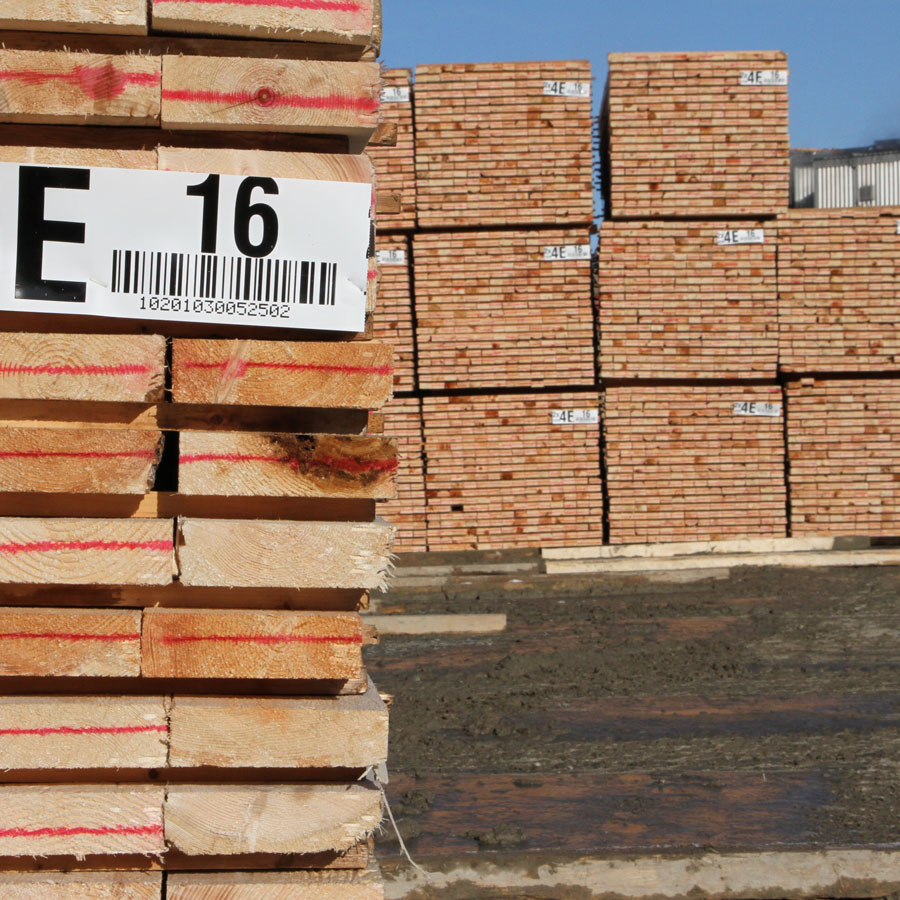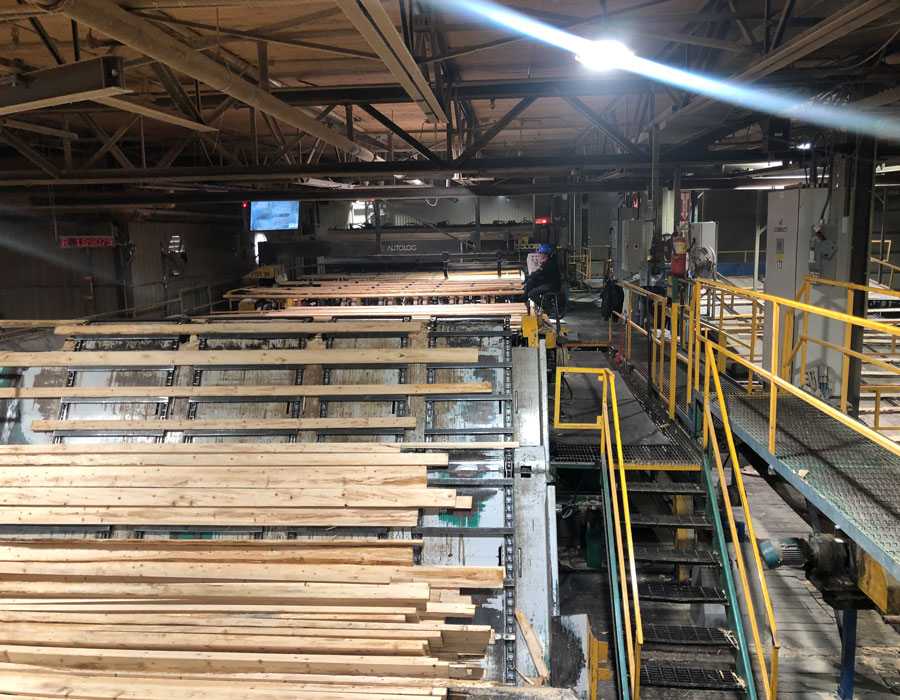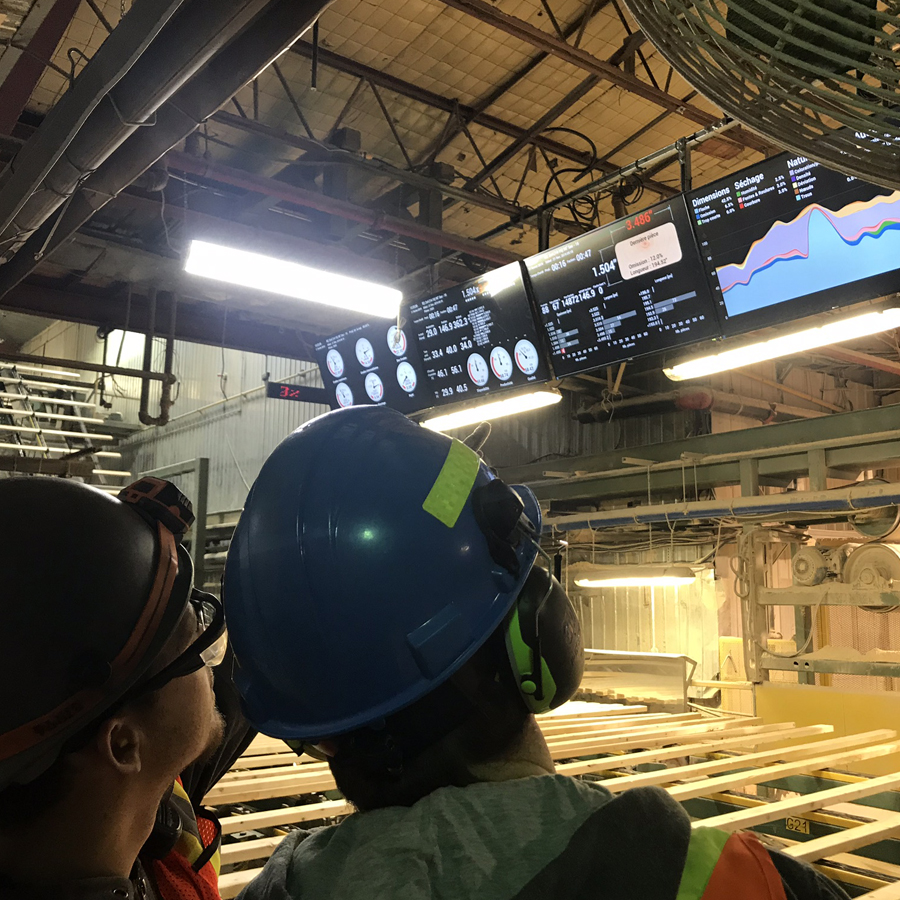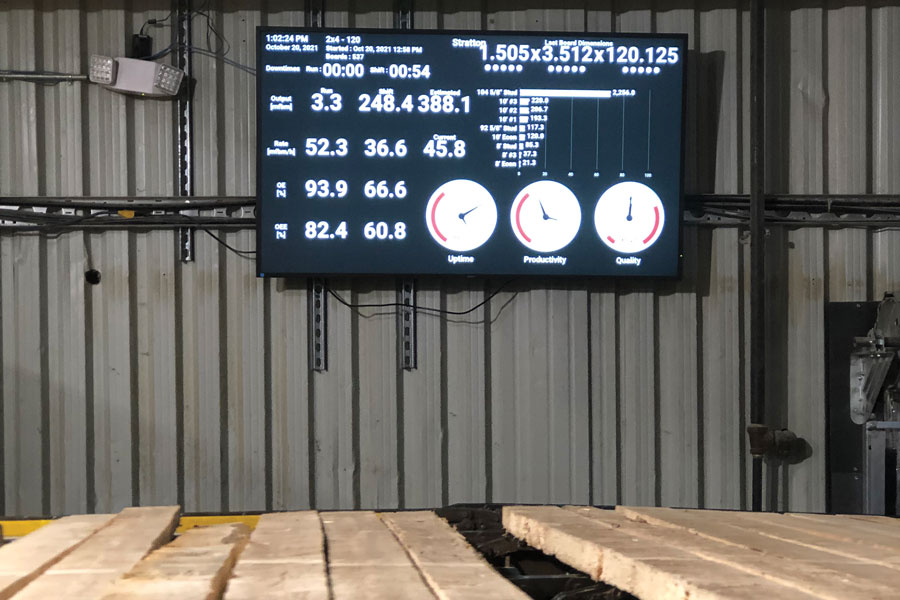
IMPLEMENT A QUALITY CONTROL PROGRAM
Establish a system to inspect and grade the lumber at various stages of production to ensure consistent quality.
IMPROVE SAWING ACCURACY
Use advanced sawing equipment and techniques to reduce waste and improve the accuracy and consistency of cuts.
PROPER KILN DRYING
Control the temperature and humidity of kiln-drying chambers to prevent defects and ensure proper drying.
USE PROPER STORAGE AND HANDLING PRACTICES
Minimize damage to lumber during storage and transportation with proper stacking techniques and covering materials.
PLAN FOR AN ADEQUATE INVENTORY TURNOVER
By properly planning lumber package movements between each processing step in the mill, it is possible to minimize quality losses caused by overexposing the wood to weather.
TRAIN EMPLOYEES
Provide training and education to employees on quality control and best practices for production and handling of lumber.
PERFORM REGULAR MAINTENANCE
Regularly maintain and repair equipment to ensure optimal performance and availability, as well as reduce the risk of defects in the finished product.
IMPLEMENT A CONTINUOUS IMPROVEMENT PROGRAM
Continuously monitor and evaluate processes, and seek feedback from customers to identify areas for improvement and drive quality up.
Without high-quality information, you won't reach your goal of improving the value of your end products. Investing in an ERP and studying equipment production reports will not positively impact product quality because:
MOST ERPs LACK THE DEPTH SPECIFIC TO LUMBER MANUFACTURING
The lumber manufacturing process and the supply chain of lumber mills are very different from your usual discrete manufacturing using pass / fail tests, which is what most commercial-off-the-shelf ERPs are designed for. In fact, lumber manufacturing is closer to process manufacturing, but not quite. For example, planing is a divergent process—there are various acceptable quality grades and it’s possible to accept “losing” some a of the raw material to maximize value. This usually means that your ERP must be heavily customized to meet your needs.
MACHINE REPORTS ONLY TAKE MACHINES INTO ACCOUNT
This means that they isolate the machine from the rest of the system, overlooking outside elements that may influence its efficiency and effectiveness. These outside elements must be factored in and then analyzed, which can prove time consuming and complex, making actionable insights hard to get—thus, their impact on quality is limited.


PMP TeamMate provides real-time data on manufacturing operations, such as availability, product yields, and labor performance. This helps monitor manufacturing processes in real time and make data-driven decisions directly on the plant floor.
The information in our dashboards fits the context in which operators have to work—thus it is specifically relevant to THEM. PMP TeamMate compares production data with the specified ranges dictated by the production recipe in real time. This enables highlighting potential problems and alert operators of the fact if production parameters go out of range.
In our 15+ years working in mills, we've witnessed that to have a real impact on product quality.
PMP TeamMate can help monitor and control the quality of products being manufactured. It can also track and manage product defects, helping to reduce waste and drive overall product quality up.
PMP TeamMate pools data from all the equipment it’s integrated to and applies a layer of intelligence that takes the form of pre-analyzed reports from which you can easily derive actionable information regarding quality and more.


PMP TeamMate can also help streamline and optimize production workflows, reduce downtimes and improve overall equipment efficiency (OEE), resulting in higher quality products.
The proper planning of equipment maintenance is essential to optimising mill performance and maximize your equipment uptime. With information made relevant through context, an MES is invaluable in this planning.
PMP TeamMate, in fact, offers tools to analyze the various causes of downtime, which can help you plan maintenance and predictive maintenance.


An MES can help lumber mills to comply with industry regulations, such as the moisture content of lumber, which also yields higher quality lumber.